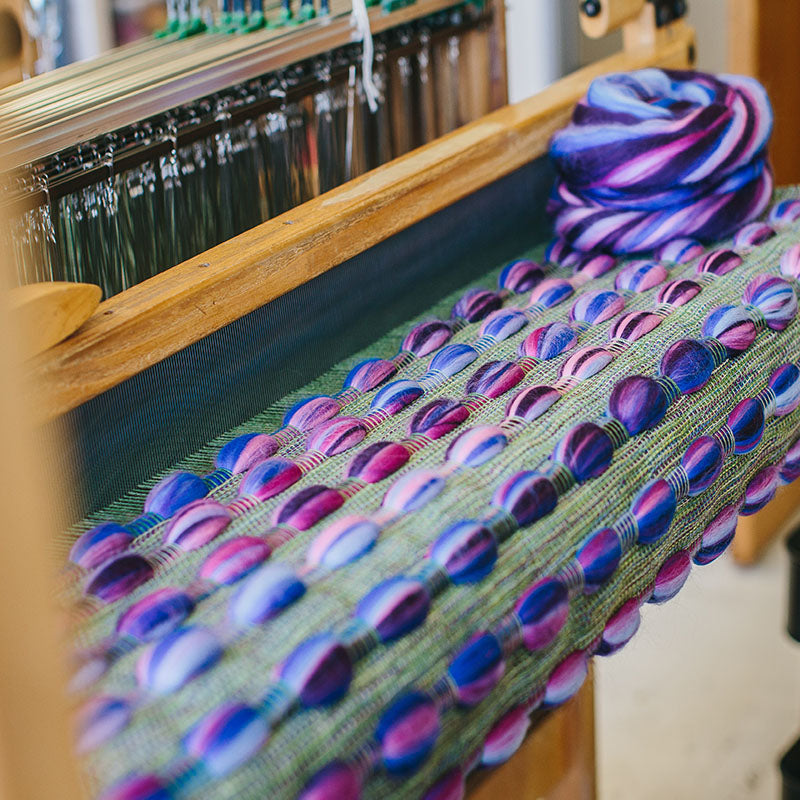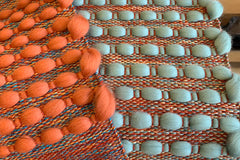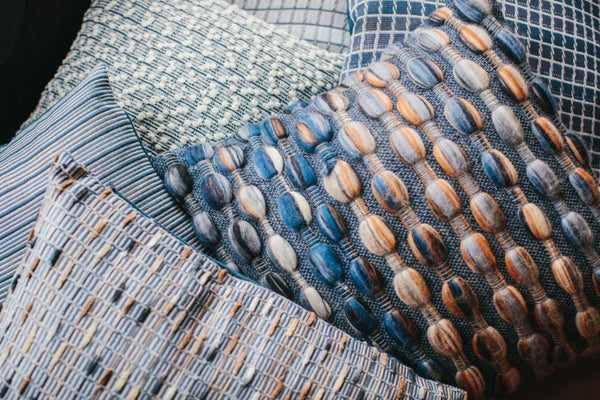
What Is Hand-Weaving? A Beginner’s Guide to This Traditional Craft
Share

During my Introduction to Weaving Workshop, I often find myself explaining the difference between hand-weaving and tapestry weaving. This topic can’t easily be digested in just one blog post, so I have decided to explain what hand-weaving is this week and what tapestry weaving is next week. But for the moment (those not interested in the technical differences) I can simply say that the former creates a repeat pattern along the length of the cloth and the latter is like drawing with yarn. But in truth, it is much more than this.
As a trained hand-weaver, I am far more knowledgeable about the process of hand-weaving, having studied how to set up looms, understand and design patterns, and the mechanics involved with the design and production of woven fabrics. But as a life-long learner, teacher, and contemporary textile designer, I find myself exploring all the different ways in which you can interlace fibres, which has started to blur the boundaries between hand-weaving and tapestry weaving.
What Is Hand-Weaving?
Hand-weaving involves working with one (or more) continuous weft threads (horizontal threads) passing through the warp (vertical threads) row upon row along the length of the fabric (by hand or machine). Depending on numerous factors (spacing between warp threads, thickness of warp and weft yarns, type of yarns, pattern, etc.), the finished cloth might expose more of the warp, more of the weft, or a balance between both to create the desired outcome.



How Hand-Weaving Works
Hand-weaving also typically involves creating patterns.
These may be simple in nature (plain weave) or complex, involving an intricate interlacing of warp and weft threads. The nature of the loom setup for hand-weaving also means that the patterns will repeat across the width of the cloth according to the warp design. The repeat will be more evident with intricate patterns and less evident with simpler patterns. I should also mention that there are many options to customise your loom to create different outcomes for your woven cloth (getting into this is a whole other blog post)!



Hand-weaving can also be carried out on a mechanised loom. This can be with a loom where the user manually lifts shafts to create patterns with their hands or feet, one that is partially done for them with the aid of a computer by lifting the shafts and advancing the pattern, or totally mechanised looms like those seen in a mill. This setup enables the length to be as long as needed with the width designated by the size (width) of the loom.



Types of Hand-Woven Cloth
Common examples of hand-woven cloth include fashion fabrics like the jeans in your chest of drawers, the button-down shirt hanging in the closet, or the scarf hanging in the hallway.
Common interior fabrics include the sheets on your bed, the cushions on your sofa, and the drapes in your sitting room. Most of these fabrics will have been woven.
Contemporary Weaving Today
Contemporary weaving today can be a combination of weaving techniques and processes. With boundaries being pushed on what can be achieved with mechanical looms that constrain the user, a typically hand-woven cloth can now actually be a hybrid.

In my work, I often look to find where the boundaries can be pushed.
As I trained on a hand loom and have found that my expertise lies with working within its limits, I experiment further with the setup, techniques, and materials to see if I can achieve a unique cloth.
In fact, I only weave designs that cannot be mill-woven on traditional looms to set myself the challenge of creating something that cannot be mass-produced.
In doing so, I will admit that I am moving away from being a typical hand-weaver to something more of a tapestry weaver who works on hand-looms… So let’s explore that topic more next week!
Happy weaving!
Cass
